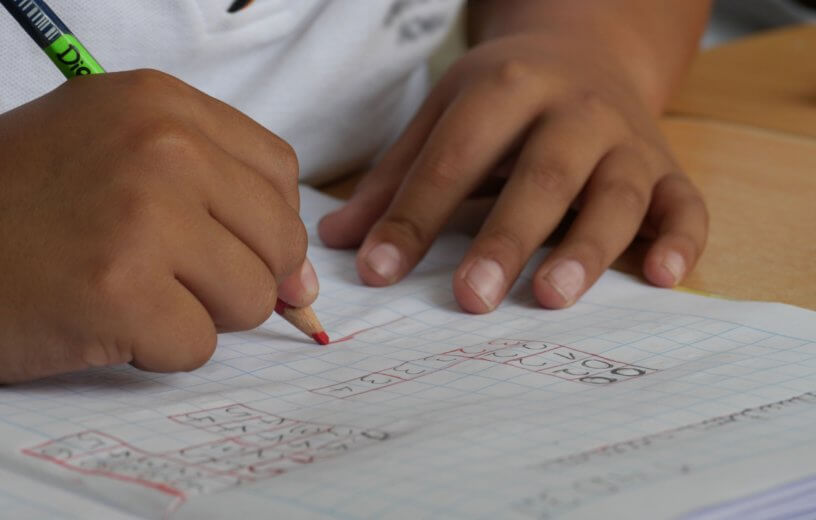PHILADELPHIA, Pa. — Math generally comes easier to some students than others, but could each one of us have instinctual division skills before ever opening a textbook? New research from the University of Pennsylvania indicates as much, as scientists report children likely possess intuitive arithmetic abilities long before starting formal education.
The team argues that kids’ inherent ability to understand and perform approximate calculations even applies to division – a math concept considered tougher to grasp than others. The findings may help in shaping how young students learn about math.
This research is largely based on the approximate number system (ANS), a well-known theory in scientific circles stating people (and even primates) possess an innate ability to compare and estimate large collections of objects without using language or symbols from a young age. One example is children identifying and acknowledging that a collection of 20 dots is bigger than a group of just four dots. This is true even if the four dots take up more space on a page. These approximation skills improve and sharpen as an individual grows older and enters adulthood.
Using math instincts to close the achievement gap
The study of ANS isn’t just about how people think about numbers before formal education, but also about how these mathematical instincts influence academic math outcomes later on in life. The study authors note finding new, innovative ways to take advantage of ANS in classrooms could help countless kids better understand math (and achieve higher grades). “The ANS is universal, and finding ways to harness the ANS might be one of many important avenues to closing the achievement gap,” says study co-author Dr. Elizabeth M Brannon, who leads the Developing Minds Lab at the University of Pennsylvania in Philadelphia, in a press release.
Researchers conducted several experiments in children ages six through nine, as well as in college students. The experiments measured participants’ ANS skills by asking them to perform symbolic and non-symbolic approximate division. They put together the experiments with two main objectives in mind. First, to test the general theory that young children possess intuitive math skills. Second, to determine whether these skills can be harnessed to improve mathematical learning efficiency later in the classroom. “This question is controversial because the existing data are mixed,” Dr. Brannon explains. “However, our study gives some hope for that enterprise by showing that children can flexibly divide quantities and even symbols before they learn about formal division.”
One experiment entailed both kids and college students performing a series of non-symbolic and symbolic math problems by watching dots or numerals (the dividend) at the top of a computer screen fall onto a flower with various numbers of petals (the divisor). Their task was simple enough: Determine which quantity was greater—the dots or numbers divided among the flower’s petals on one side of the screen or a single petal with a new, different amount of dots/numbers on the other side of the screen.
Children showed high accuracy in solving division problems
The kids answered correctly between 73 percent and 77 percent of the time. Those stats fluctuated slightly depending on whether the children received any helpful feedback while completing the task. Adults answered correctly about 90 percent of the time. Even kids who couldn’t answer verbal symbolic division problems still performed well in their experiment. This further confirms brain imaging studies showing heightened neural activity within a crucial brain region associated with “number sense.”
“We were most surprised that children who could not solve any formal verbal or written division problems – for example, what is four divided by two? – were still pretty successful at the symbolic version of our flower approximate division task,” Dr. Brannon concludes. “So, even before formal math education, we have an approximate number sense that relies on brain regions that continue to play a role in formal mathematics.”
The study is available to read in the journal Frontiers in Human Neuroscience.
